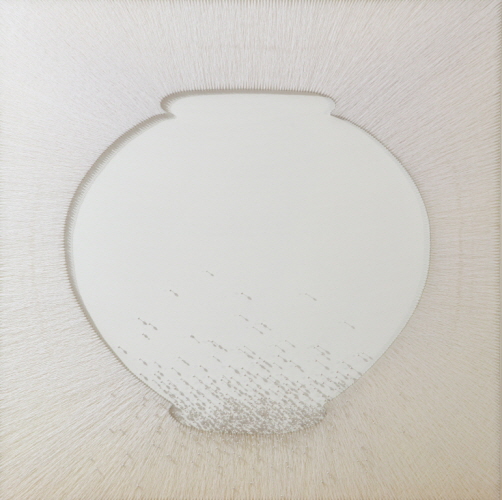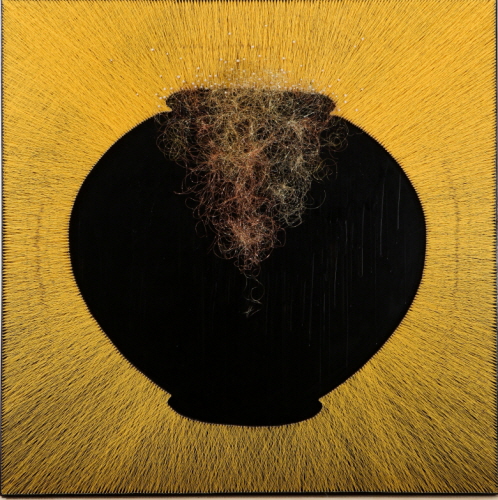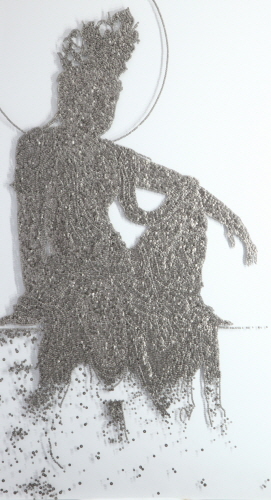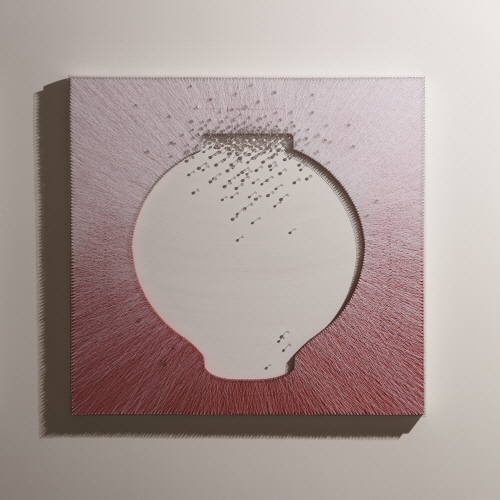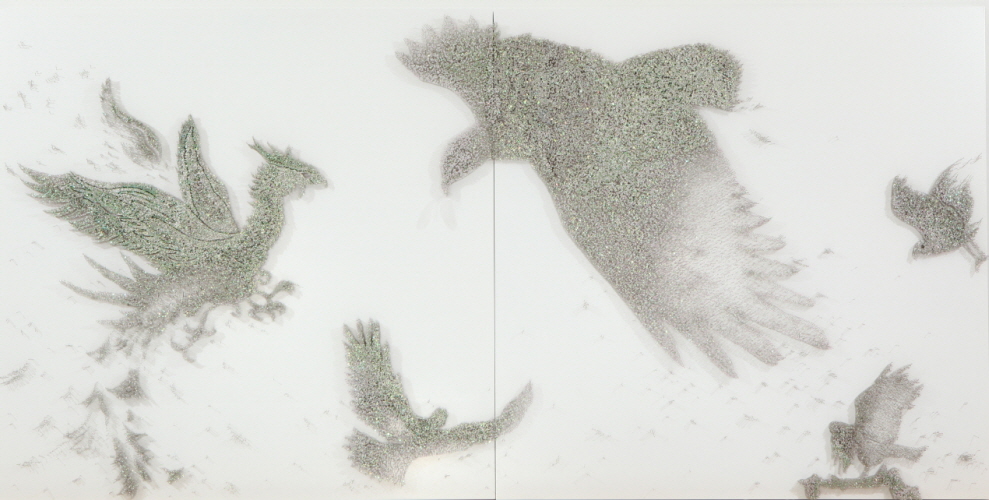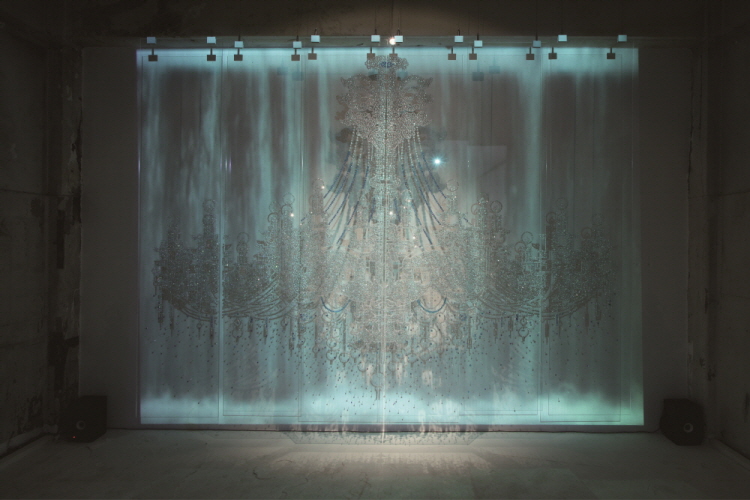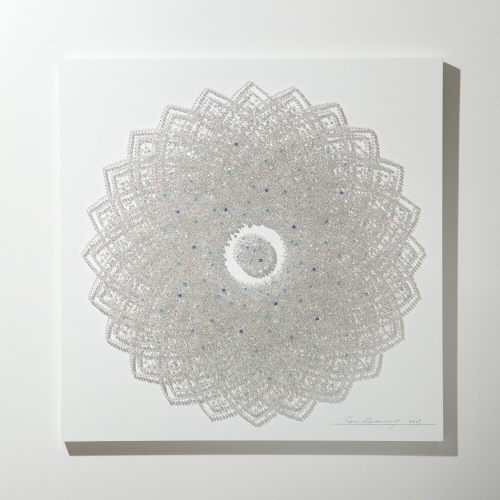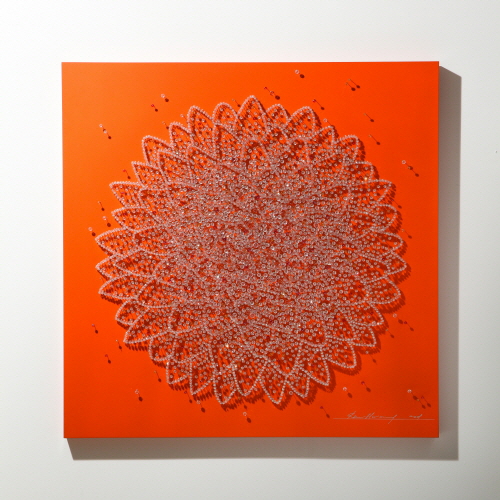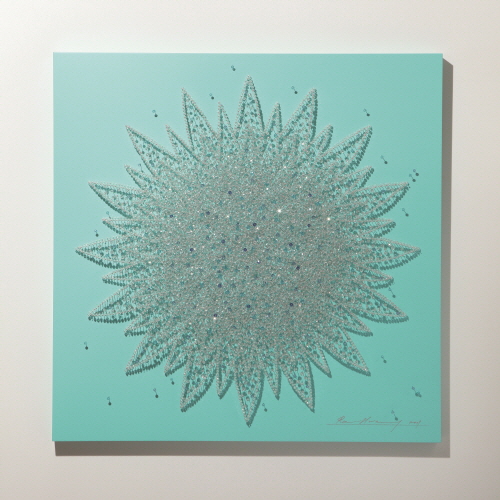Ran HWANG
Ran HWNAG
Ran Hwang: Illusion and Reality Ki Hye-gyeong Ran Hwang makes art works using thread, buttons and beads. After graduating an art college and postponing her pursuit of an art career for a while, she decided to work again as an artist when, as she later told me, she found out that the weight of life is rather heavy. After determining that she would find her direction of life in art, she went to United States for develop her career and to further her studies. The dynamic atmosphere of New York made a significant impact on her art—an impact that changed her work from painting to installation using new materials like thread, buttons, etc. During the early part of her career, she used female silhouettes, fashion items and women’s accessories as motifs. The characteristics of her style are evinced in her early works such as Chandelier Woman, 2007. Although Hwang’s early works could be read as feminine because of their materials, they were different from traditional feminist art because they were intimately related to the spirit of the late 1990’s. Rather than focusing on the structural differences and contradictions of gender, Hwang used images made of common materials to create feminine images within a society of mass consumption society and gingerly touching upon the desires of women and their feminity. Although, in her early works, Hwang used buttons and thread because of their material properties, and symbolism, later, she started to pay more attention to the message behind her forms. The change, which occurred after she witnessed people jumping off the burning twin towers on 9/11, came from her new perspective on society. She understood that although people are part of mass society, numberless like thread and buttons, without them, no society or artwork could exist. Indeed, after her changed perspective, the stitches and buttons started to speak for common people, their membership in society, and their prosaic yet unique lives. Furthermore, the materials she used to construct her works became more than just her working materials—they started to have a profound personal significance. Because each individual unit in Hwang’s works represents the common person as a member of society, it demands time. Physically speaking, time can be understood as more than just a working period but rather can be seen as that time required for a human to reflect on his/her life. In a sense, her works are the result of myriad careful considerations and reflection on life. Just as her materials became more meaningful after her epiphany, her view of life also changed to reflect these serious considerations. Since then, new motifs such as birds, the Buddha and full moon jars appeared in her works. Indeed, all these works evince a modern encounter with Zen Buddhism and with issues of power. In Red Bird, 2008, Hwang has depicted a caged bird out of red buttons and pins. It appears to be disintegrating on its bottom half and many of its buttons have dropped to the floor. This can be seen as a statement of power not only because of the cage, but also the implied jailer. Hwang’s Buddha, 2008 is depicted meditating under a blossoming plum tree as he seems to be reflecting on the meaning of existence. Jar, 2009 is shaped like the full moon and is part of her Urn series expressing the empty yet full space of Taoism. This exhibition should be understood as the extension of her past work but with differences. Now Hwang is more serious both in her form and in her message that in a way, represents innocence lost through witnessing tragedy. Hwang still shows us a glamorous world but, one that is also fatal. In this world, there is a tarantula hidden in the bright light of her crystal chandelier, a beautiful yet deadly snake under a blossoming plum tree and a desert flower hiding a thorn. In this lovely yet deadly world, we are like birds surrounded by volcanic ash, not knowing where to hide and unable to fly, even when we are aware of the danger of the world and try to avoid it. The world she creates is ambivalent. This ambivalence comes from her motifs that originate from life in all its bittersweet drama and despite the gorgeous materials she uses. For this show, Hwang utilizes mainly sparkling materials like shell buttons, crystal balls and beads. But, although these materials can ostensibly appear decorative, the works are anything but—which shows in the subject. This result can be likened to Zen Buddhism’s teachings— that this life is an illusion and that the real thing lies in Nirvana. Truly, Hwang’s clever illusion can be seen as a slice of modern life, and that is why her works are noteworthy. In the exhibition, Hwang displays the harsh reality hidden in the beauty, and in her works, we see the tragedy of our lives, our helplessness of not knowing what to do even when we are aware of the danger in our lives. Are her works all pessimistic, then? The artist does not answer the question. Instead she provides us with room for interpretation that like a Guan Yin (the Buddhist Goddess of mercy) gazes at the world peacefully. And finally, it is up to the viewer to conclude whether Hwan’s world is sweet, fatal or a bit of both.


